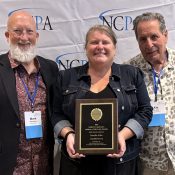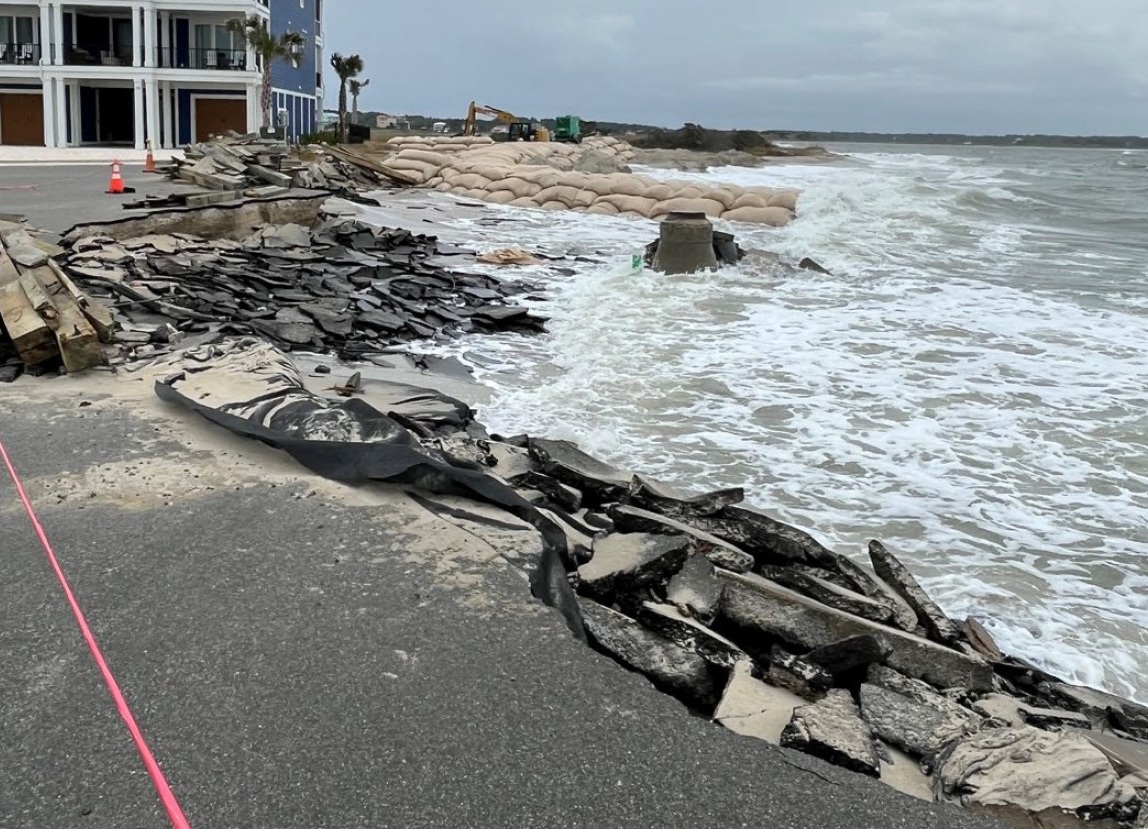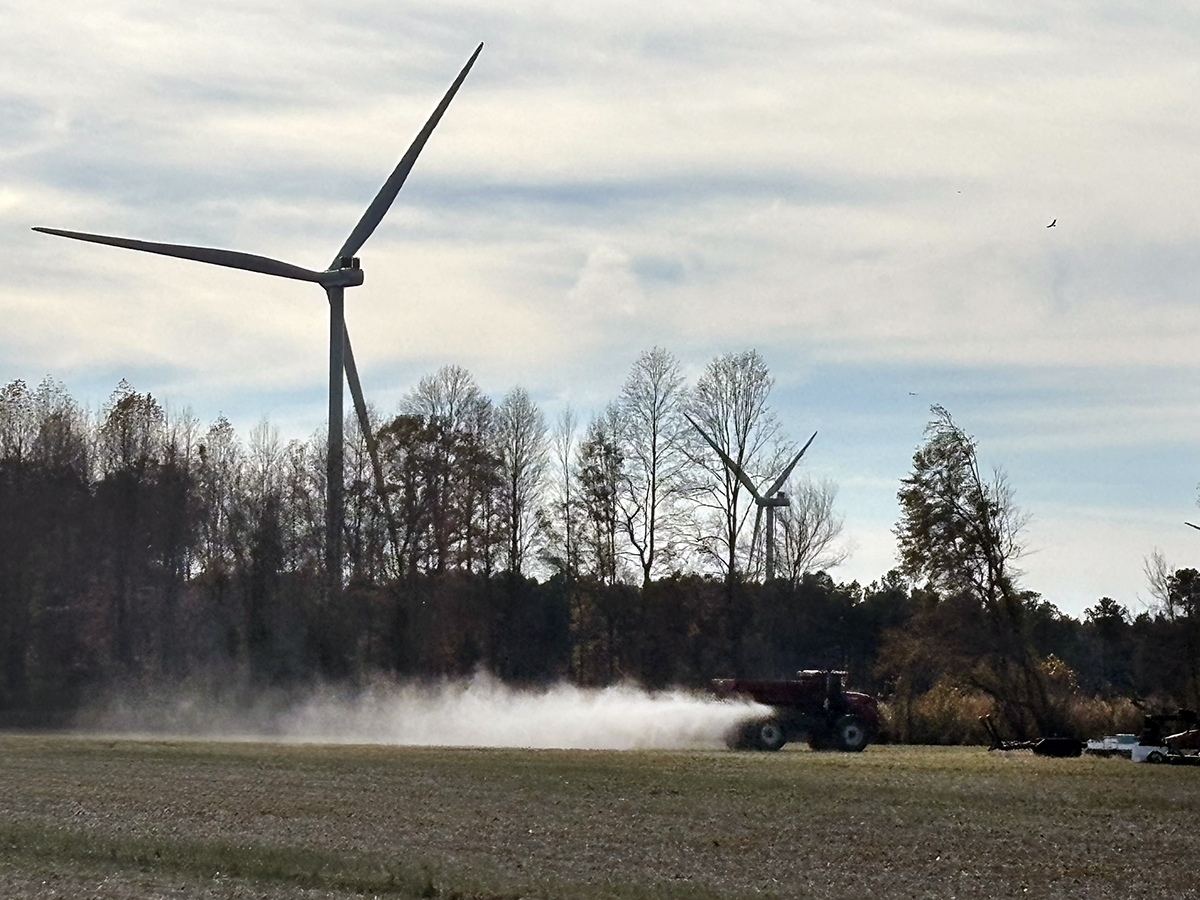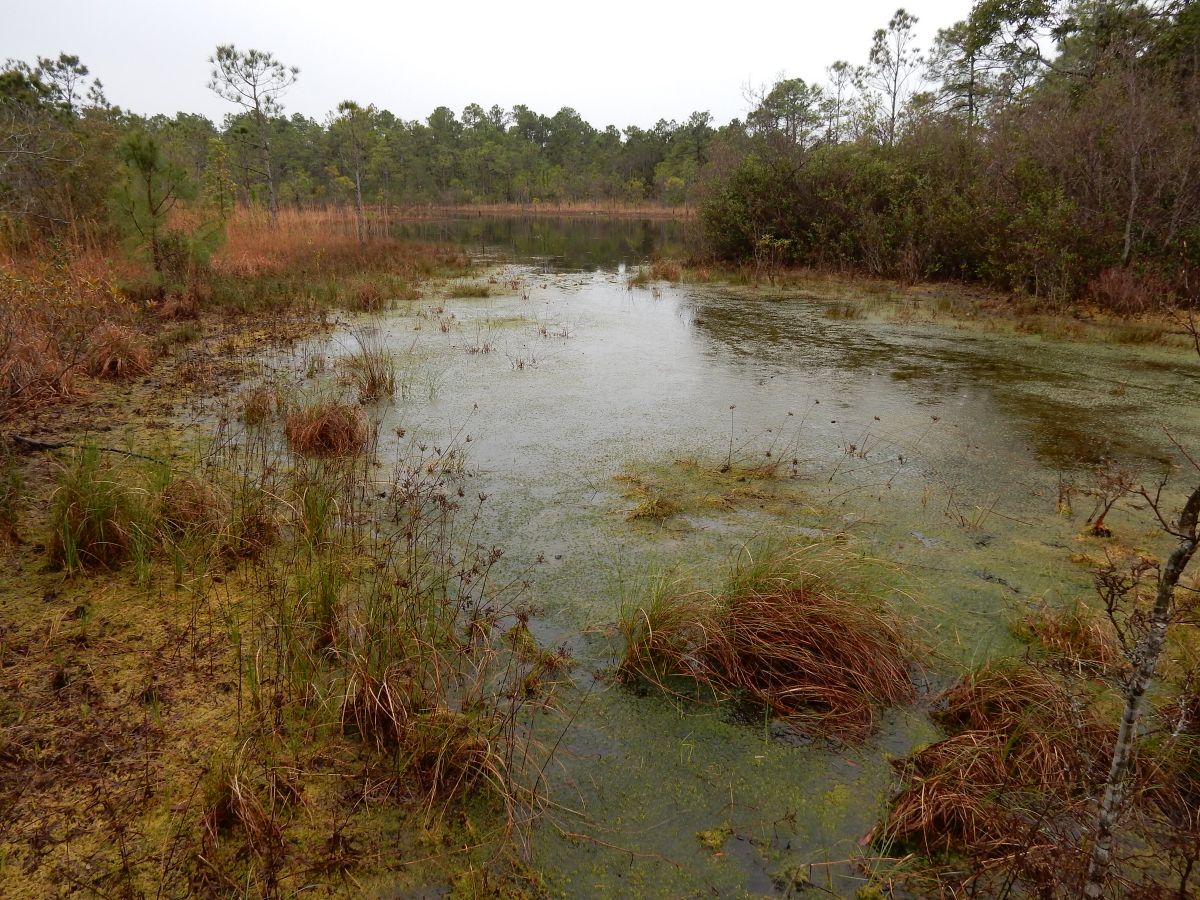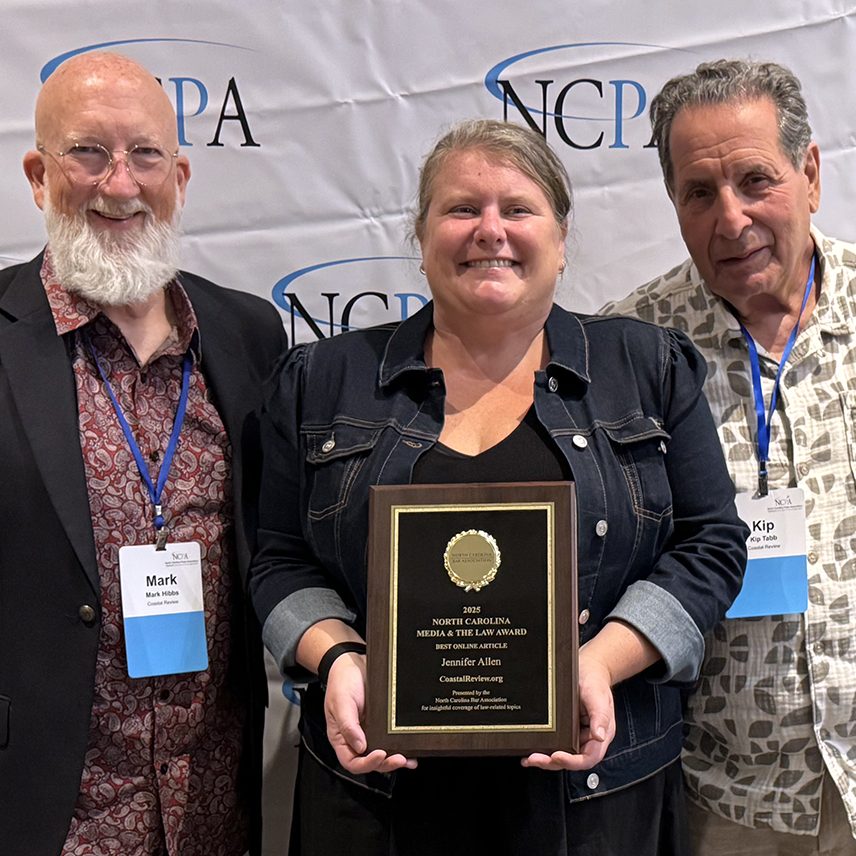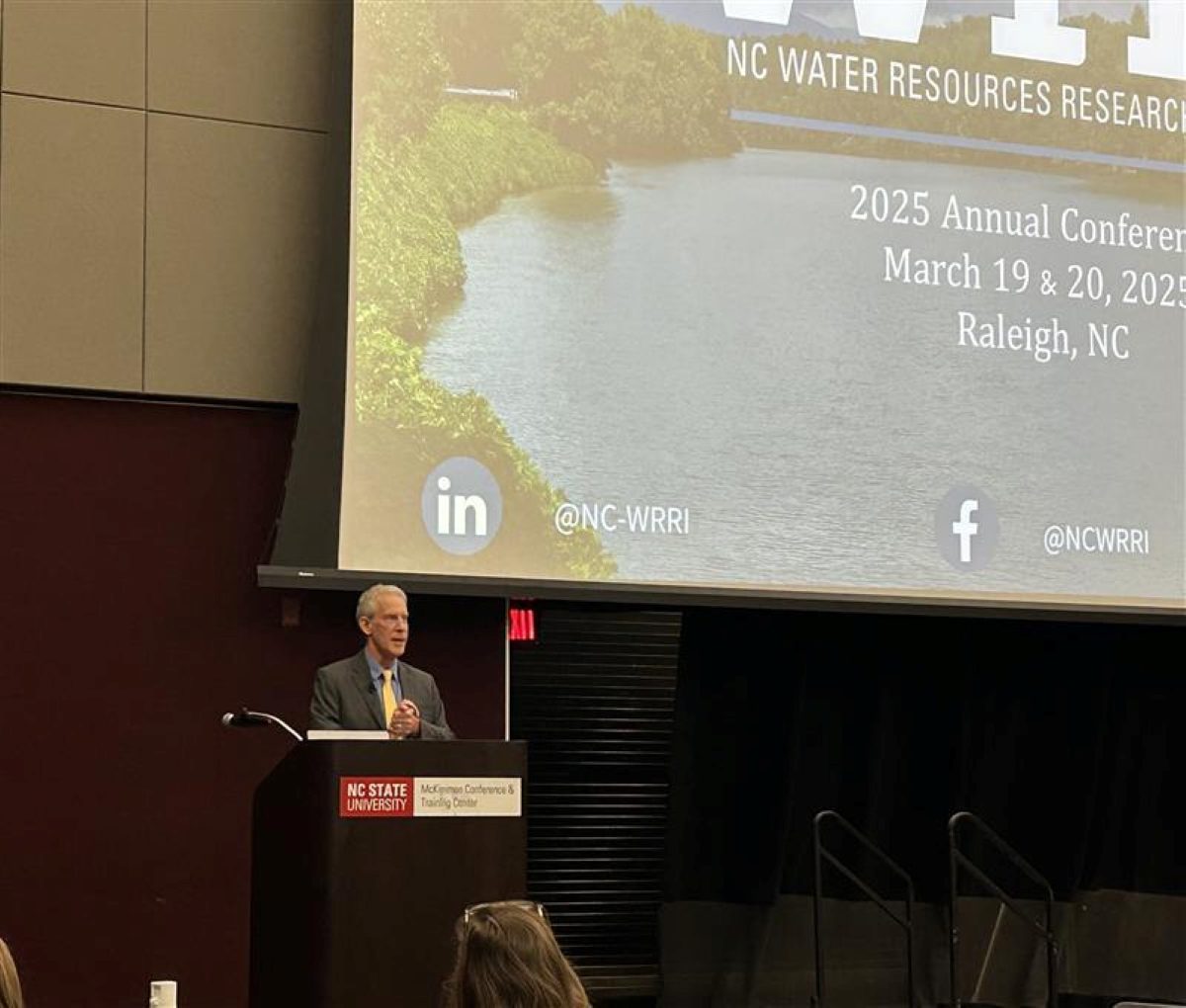
First in a series on legacy and emerging water supply pollutants.
RALEIGH — Addressing PFAS and other emerging compounds is a “top priority” for the North Carolina Department of Environmental Quality, Secretary Reid Wilson told the more than 300 attending the N.C. Water Resources Research Institute’s annual conference.
Supporter Spotlight
“We are spending a lot of time and energy” working on per- and polyfluoroalkyl substances, or PFAS, because it’s important, Wilson continued Thursday, adding the department wants to work with all stakeholders in addressing PFAS through a comprehensive approach in a systematic, organized way.
WRRI is a multi-campus program of the University of North Carolina System that provides resources, and supports junior faculty, and undergraduate and graduate students.
The 2025 conference was held March 19-20 in the McKimmon Center and featured talks about the latest research on stream restoration, water supply planning, stormwater management, water quality, groundwater dynamics, community engagement and other water-related issues.
Wilson began his remarks by thanking the room full of researchers, educators, students, nonprofit representatives, academics and others for their contribution to science.
“I’ve been in North Carolina for 22 years,” Wilson said, explaining that he and his family moved from Maryland. “My work in these last 22 years has taken me to all corners of the state, and as I travel around, it just reminds me of the importance of making sure that everybody who lives here has clean air, clean water, healthy land from which their food comes and that they can roam around on, if it’s a park or a trail.”
Supporter Spotlight
NCDEQ has made “great strides over the years to collaborate with the research community to better understand the state of science a range of issues,” he said, and to ensure residents are better informed and better protected.
“We can’t make good decisions without sound, solid and unbiased scientific data. If we don’t rely on science, we will make bad decisions, and people’s health will be harmed. We don’t want that. It’s that simple,” Wilson said. “We have to base our decisions on science.”
When it comes to the emerging compounds in North Carolina’s water, programs like the PFAS Testing Network Applied Research Fellowship bring together DEQ and leading scientific experts “as we work to improve our understanding of these forever chemicals and generate the data needed to protect our communities.”
There have been several rounds of cohorts each semester working with nationally recognized experts from Duke University, the UNC system and its schools.
“We’re also partnering with Duke University Medical Center to conduct cutting edge research on how PFAS breaks down in our bodies. So we are working relentlessly to learn about these chemicals, protect our environment and safeguard our public health,” Wilson said.
NCDEQ launched its PFAS action strategy in 2022 to clean up contamination, protect drinking water and to take action to limit discharges of PFAS, into air and waterways.
“Part of that is we are sampling water systems to determine the extent of PFAS contamination, and that includes not only larger water systems, but smaller ones, like schools and daycares as well. And we have just deployed a robust set of ambient monitors that sample PFAS in the air, groundwater, lakes, rivers, streams, land, everything we can do,” he said, adding they’re really trying to “determine the extent of contamination of these chemicals.”
Wilson explained that, earlier this month at the department’s direction, Chemours, the company linked to discharging PFAS into the Cape Fear River, agreed to “significantly expand testing” of private wells in a larger area around their Fayetteville Works facility.
“In terms of infrastructure,” Wilson said the department has “significant funds available” for towns, cities, counties, and water and sewer authorities for construction and planning projects that address PFAS contamination, and other water infrastructure needs.
“This funding makes it possible to assess options, design a solution to address PFAS contamination, implement treatment and develop with necessary alternative sources of drinking water,” Wilson said.
And last month, the department announced $265 million in drinking water and wastewater infrastructure grants that included $13 million for PFAS-related projects.
“Over the recent years, we have allocated $345 million to PFAS-related water infrastructure projects,” Wilson said. These investments are important, and will help improve lives and safeguard public health.
In Gov. Stein’s budget proposal released Wednesday for the next two fiscal years, Wilson said that it “includes an additional $1.5 million and three more employees to work on PFAS issues, to expand our capacity to address this problem, which affects lots of people in North Carolina.”
Wilson said that in addition to protecting people from PFAS and other water quality issues, “another huge priority for us is helping western North Carolina clean up, recover, rebuild from Helene.”
Millions in state and federal assistance have been provided since the September 2024 storm decimated the North Carolina mountains to restore and rebuild the region. “I think we all know that this recovery will continue to take years,” Wilson said.
“I know probably everyone in this room is trying to figure out what happens next in terms of recovery and rebuilding. We really must raise our sights beyond the immediate recovery to rebuild more resiliently, because we know these storms will keep coming with increasing frequency severity,” he said.
“Obviously, planning and public engagement will be key to this process in the mountain communities as they recover and rebuild, but that’s equally true for all over the state,” Wilson said. “We have to engage the public. We have to plan for the future, and again, plan for more severe storms.”
In an interview with Coastal Review, Wilson encouraged all stakeholders to weigh in and share their thoughts with decisionmakers, whether that’s an agency like NCDEQ, or the legislature or Congress, as environmental regulations undergo changes.
“We want to hear what people think to make sure that we’re making the best possible decisions to help people be healthy,” Wilson said.
Next in the series: Ultra-short chain PFAS


